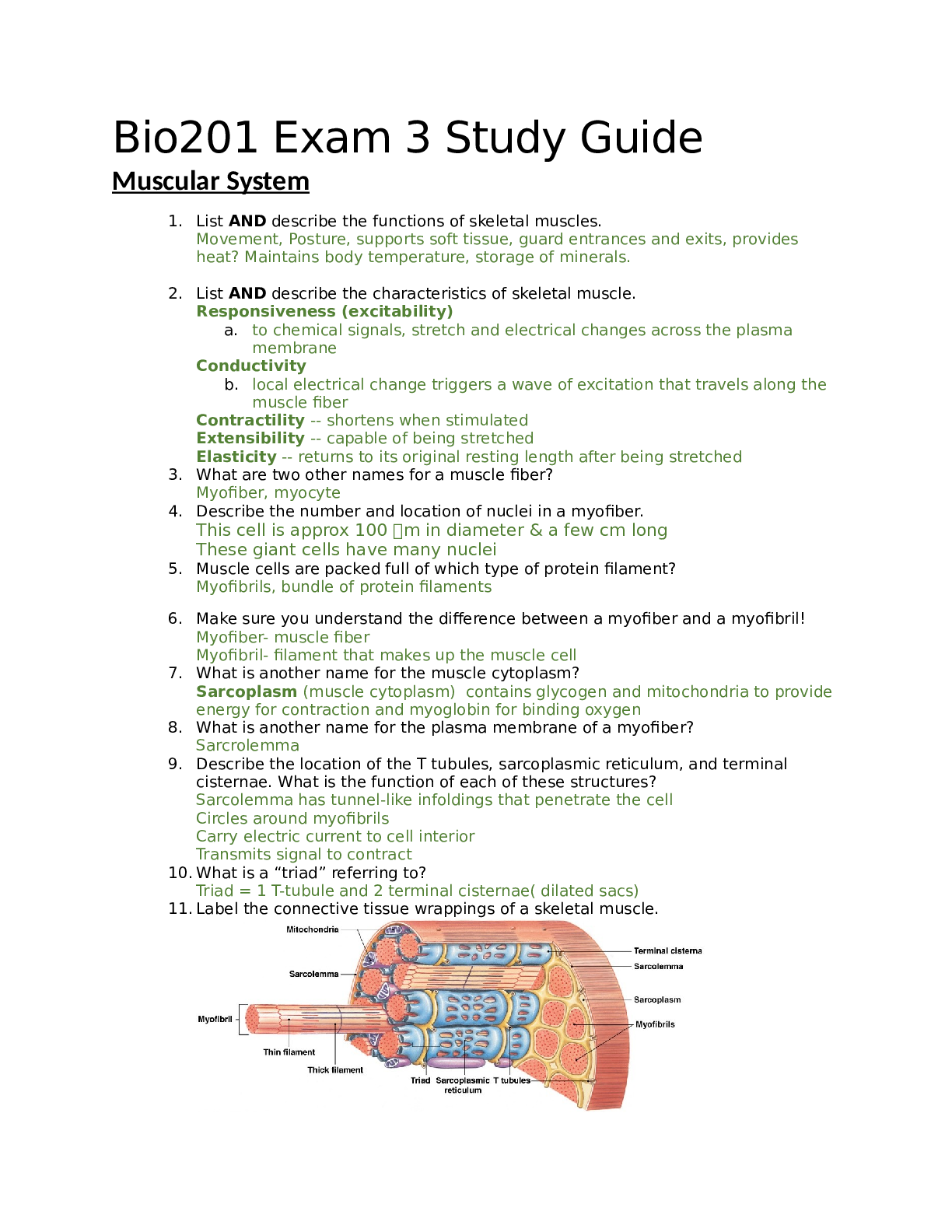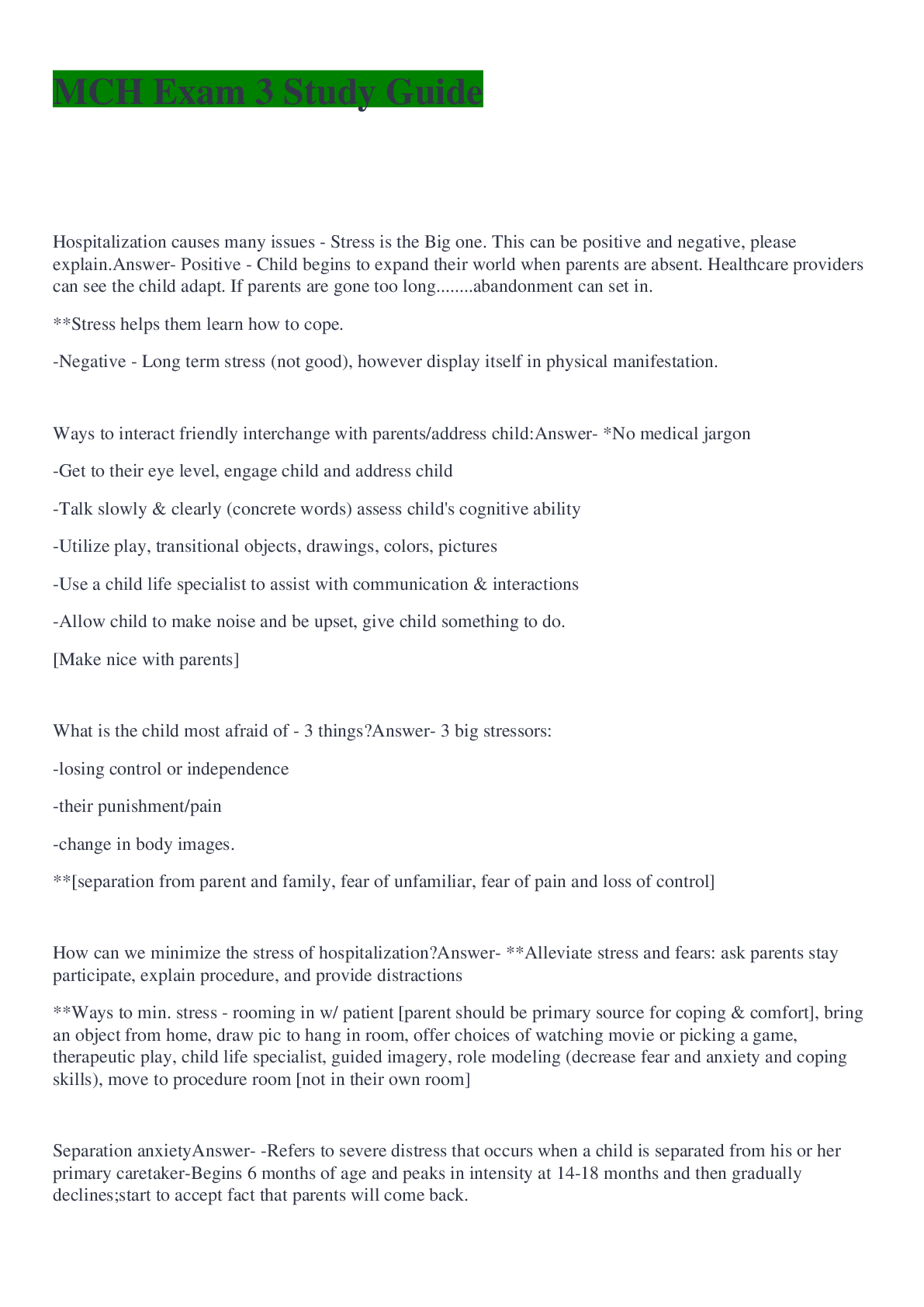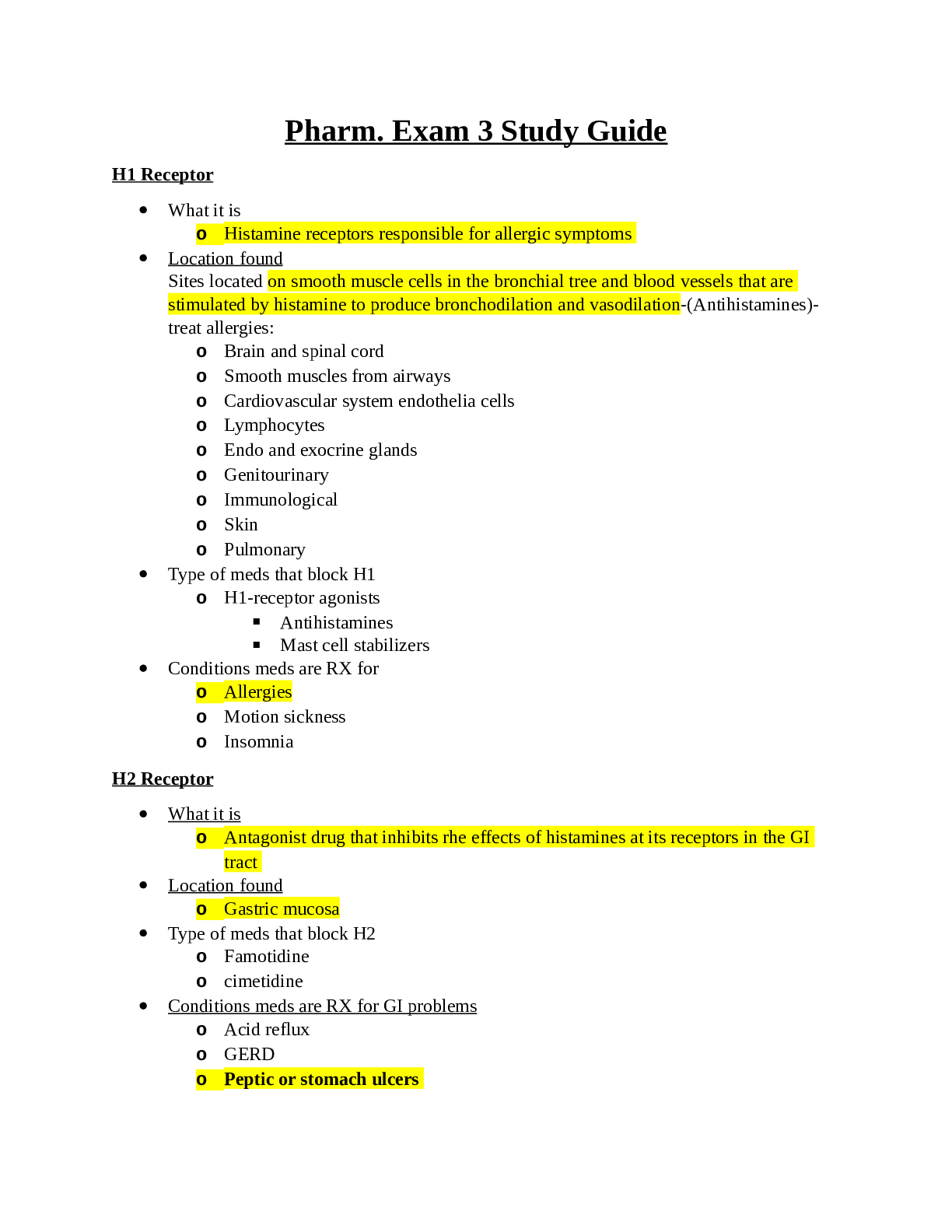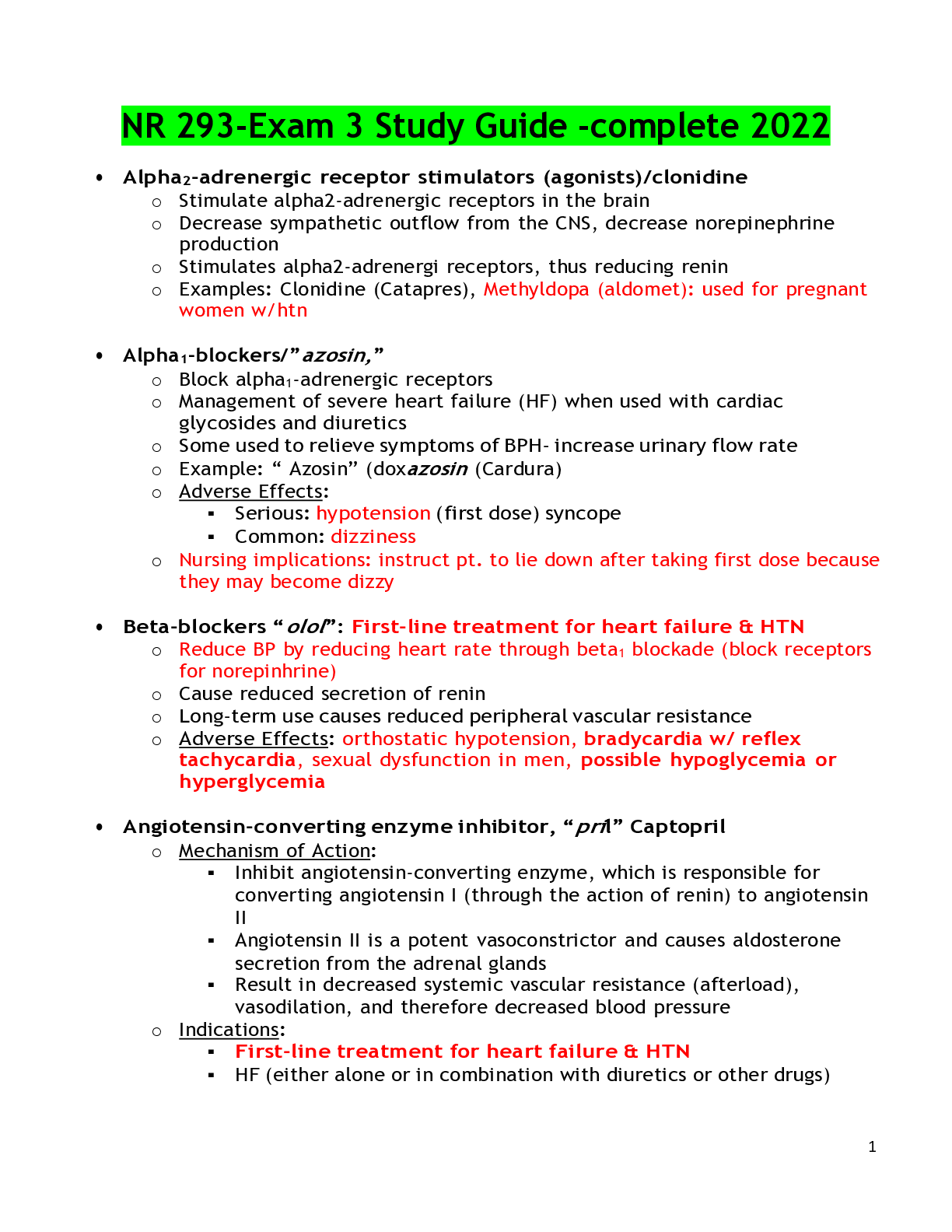Nutrition > STUDY GUIDE > NR 228 Exam 3 Study Guide Chapter 14, 17, 18, 20 ;Already Graded A+ (All)
NR 228 Exam 3 Study Guide Chapter 14, 17, 18, 20 ;Already Graded A+
Document Content and Description Below
NR 228 Exam 3 Study Guide Chapter 14: Hepatitis-Causes and Diet: o Hepatitis A: fecal / oral (poor handwashing) vaccine asymptomatic adequate nutrition needed / NO alcohol o Hep... atitis B: blood, sexual contact, vaginally during delivery vaccine asymptomatic adequate nutrition needed / NO alcohol o Hepatitis C: blood, saliva, tears, semen no dietary recommendations baby boomers get this the most o Hepatitis D: only occurs if you already have Hep. B no dietary recommendations risk factor: IV drug use o Hepatitis E: self-limiting, enterically transmitted risk factors: travel to tropical areas avoid drinking water and avoid uncooked fruits and veggies no vaccine Fatty Liver at Risk and Diet: o avoid over nutrition - high fat - high fructose - weight loss w/out skipping meals o mist common cause: alcohol - obesity - some medications - parenteral nutrition o liver disease ---> impairs protein synthesis ---> most affected is the immune system Liver Failure/Cirrhosis/Esophageal Varices/Ascites: o Liver Failure: o Cirrhosis: protein and energy malnutrition common, soft, low-fiber, sodium and fluid restriction chronic disease o Esophageal Varices: soft diet o Ascites: sodium retention -- cannot use actual weight because of the fluid, need to find another way to weigh these pts Gall Bladder Risk and Diet: o occlusion can lead to ---> liver problems / failure or pancreatitis o risk factors ---> rapid weight loss through low calorie diets, very low fat diet, skipping breakfast This study source was downloaded by 100000831988016 from CourseHero.com on 05-09-2022 16:23:12 GMT -05:00 https://www.coursehero.com/file/28812688/Nutrition-Final-Exam-Review-Info-docx/ o avoid fatty foods o IV fluids Chapter 16: When/How to Resume Post-Op Diet: o assess swallowing ability before transition o slowly advance diet o increase oral intake while decreasing tube feedings o proper assessment of GI tract required before weaning from parenteral nutrition o presence of bowel sounds Calorie Counts: o done for the malnourished pt. o best way to evaluate poor appetite Burn Injury Diet: o enteral nutrition needs to start w/in the first 24 hrs. of transmission Diabetes: o diagnosed via blood glucose level > 126 fasting (must be collected two times to determine) o A1C normal is 4-6% and over 6.5% indicates type II DM o Type I ---> insulin deficient - have to be on insulin for the rest of their life, early s/s are the 3 P’s o Type II ---> insulin resistance / intolerance - diet, oral meds, insulin o tx ---> diet ---> carb counting o hypoglycemia ---> rule of 15 (pts skin, hot and dry the sugar is high) Supplements for Wounds: o vitamin C o zinc Chapter 17: Triglycerides: o At risk: diabetic pts - overweight pts - alcohol abuse pts - sedentary lifestyle - smoking - high carb. intake - genetic factors - meds. o most common fat found in the bloodstream Cholesterol: o high cholesterol ---> over 200 This study source was downloaded by 100000831988016 from CourseHero.com on 05-09-2022 16:23:12 GMT -05:00 https://www.coursehero.com/file/28812688/Nutrition-Final-Exam-Review-Info-docx/ o sterols = cholesterol o bile, vitamin D, sex hormones, cells in the brain and nerve tissue o food sources: meats - fish - dairy (plants don’t contain cholesterol) o LDL = amt. of cholesterol brought to the cells that has the potential to be dropped off along the way to clog vessels (puts cholesterol on the walls) should be evaluated every 6 weeks after changing diet Heart Healthy Foods: o DASH diet ---> low sodium increasing fruits and veggies decreasing dairy - red meat - soup - sauce - spices - sauerkraut - snacks - sodium processed meats o Mediterranean diet ---> low cholesterol (consume a lot of olive oil) fruits, veggies, grains and only source of protein comes from fish 40% of calories from fat o Basic diet ---> low sodium and low cholesterol - fluid restriction HTN Treatment: o weight loss o reduce sodium o usually results are seen w/in 2 w [Show More]
Last updated: 1 year ago
Preview 1 out of 5 pages

Reviews( 0 )
Document information
Connected school, study & course
About the document
Uploaded On
May 10, 2022
Number of pages
5
Written in
Additional information
This document has been written for:
Uploaded
May 10, 2022
Downloads
0
Views
95
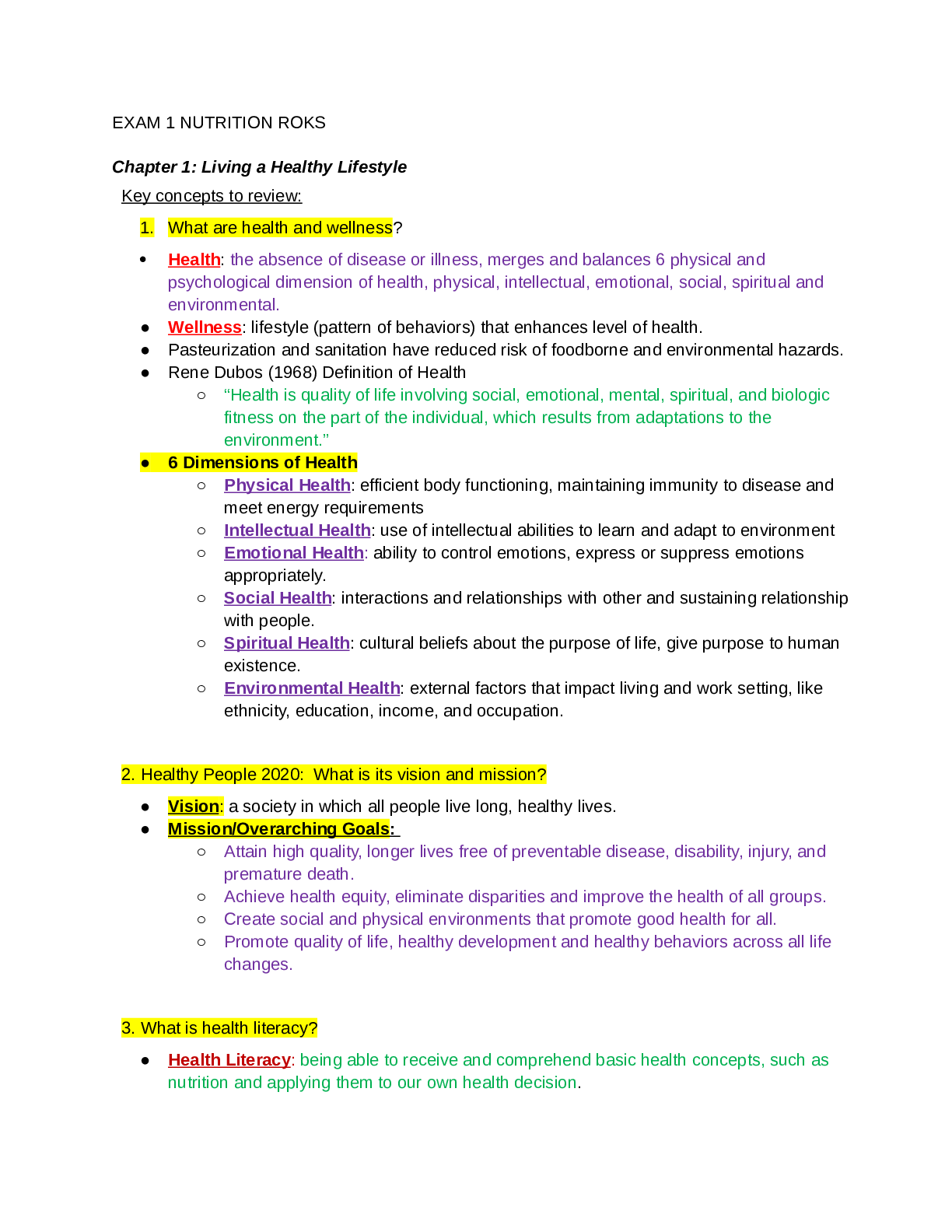



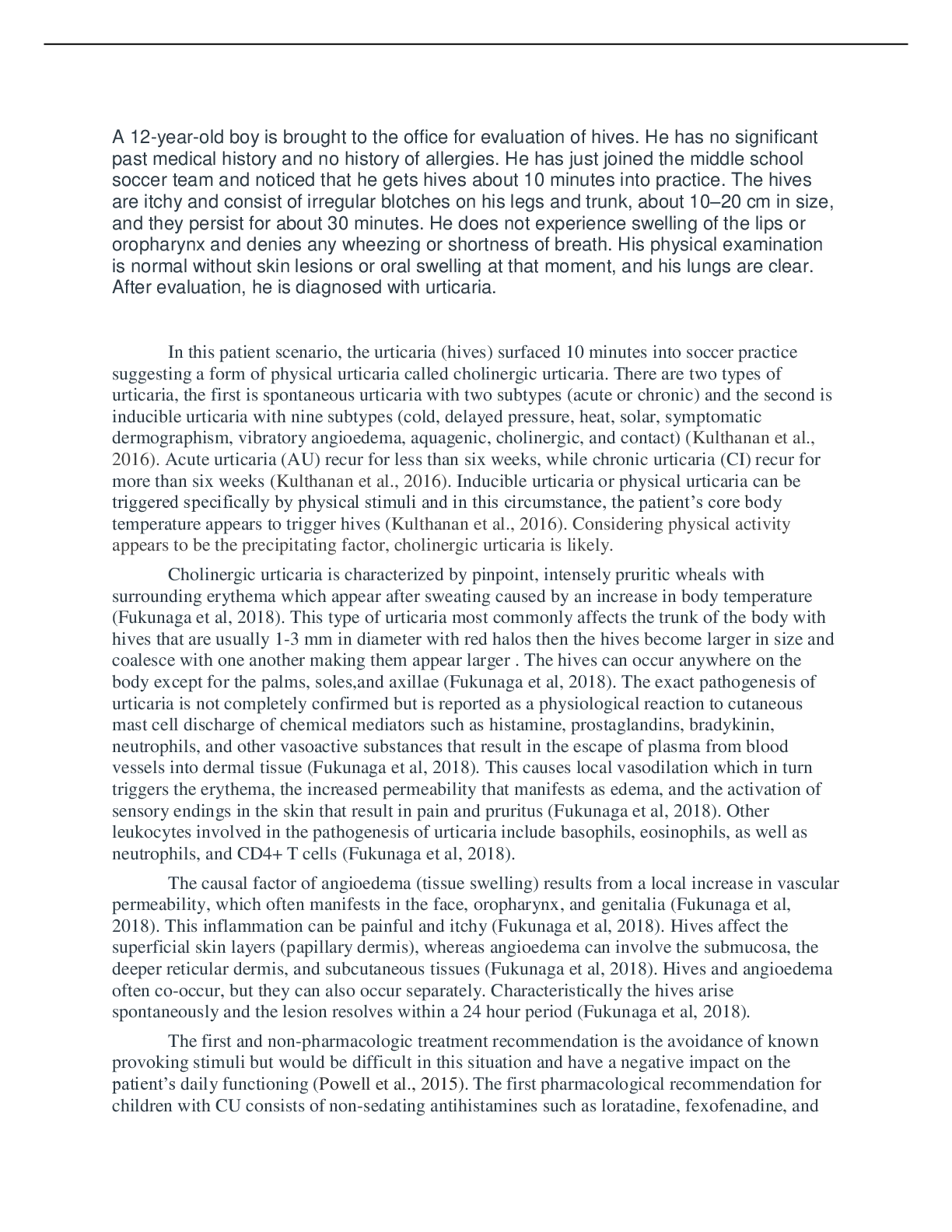
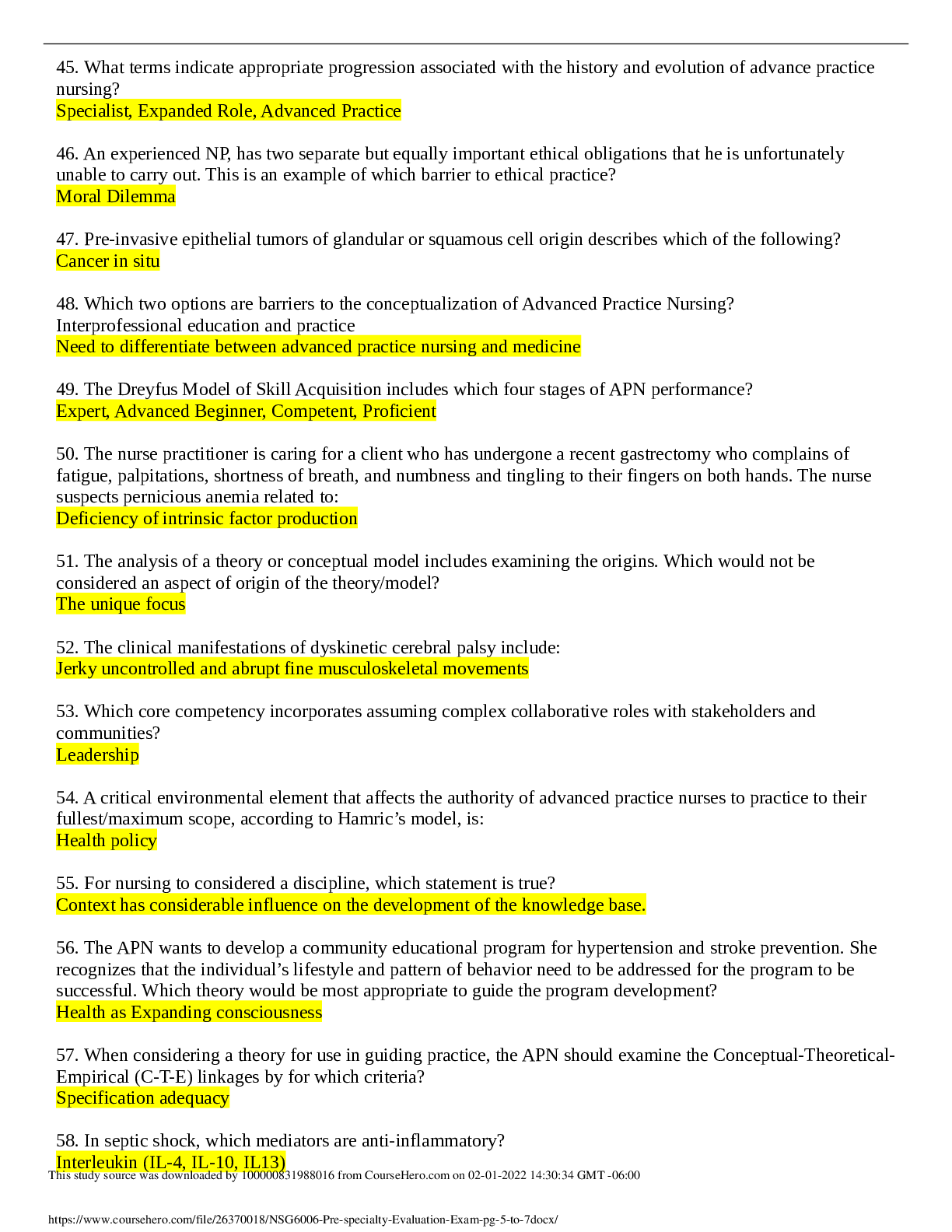





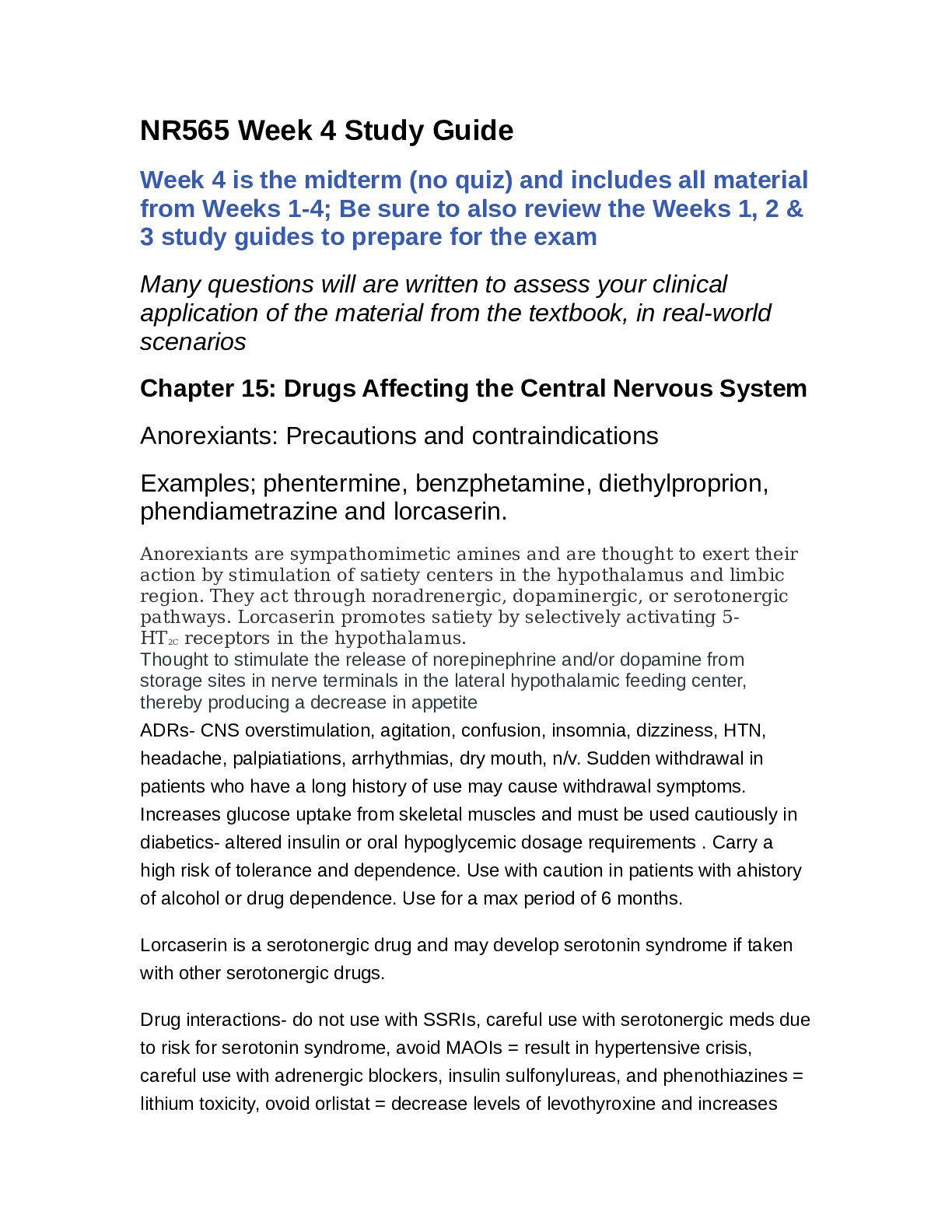
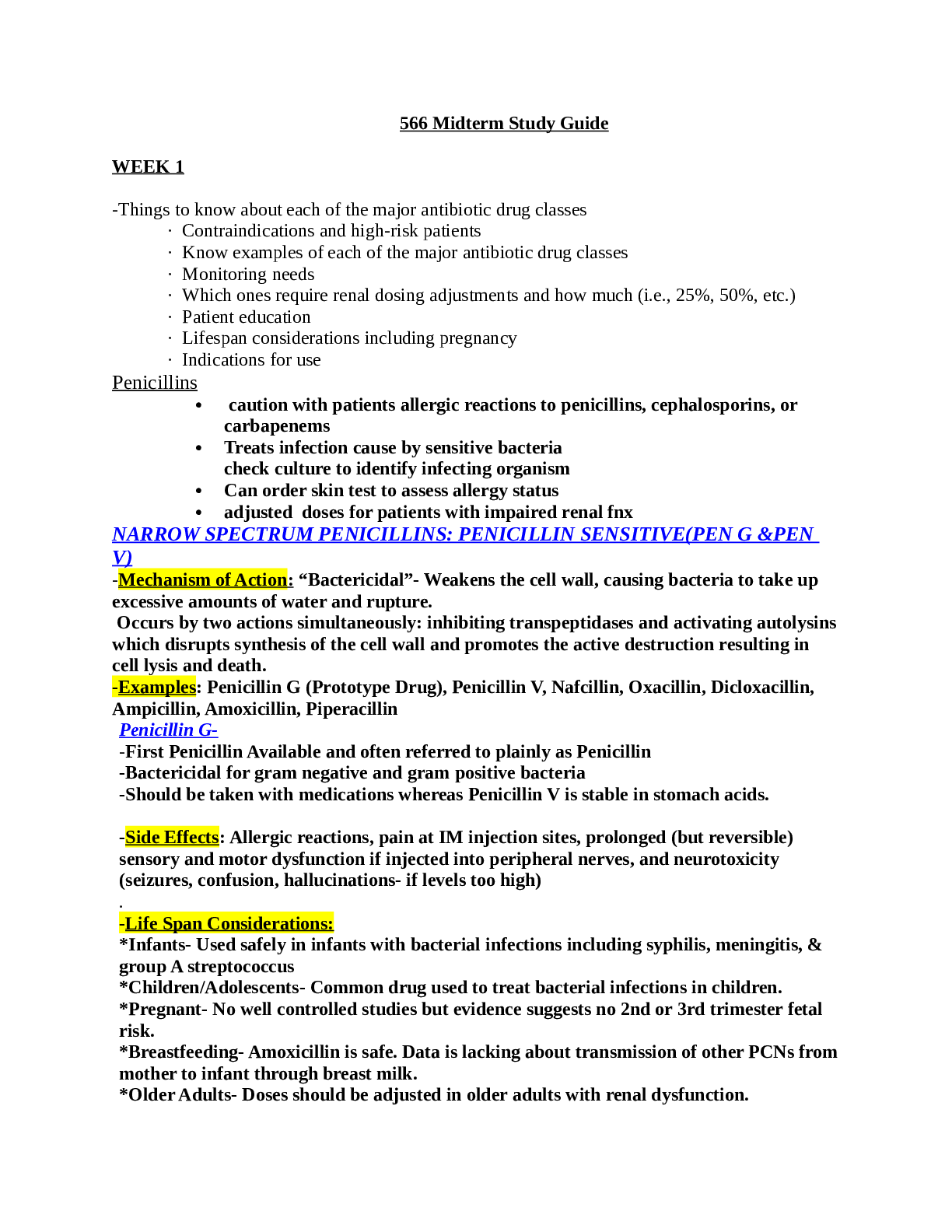


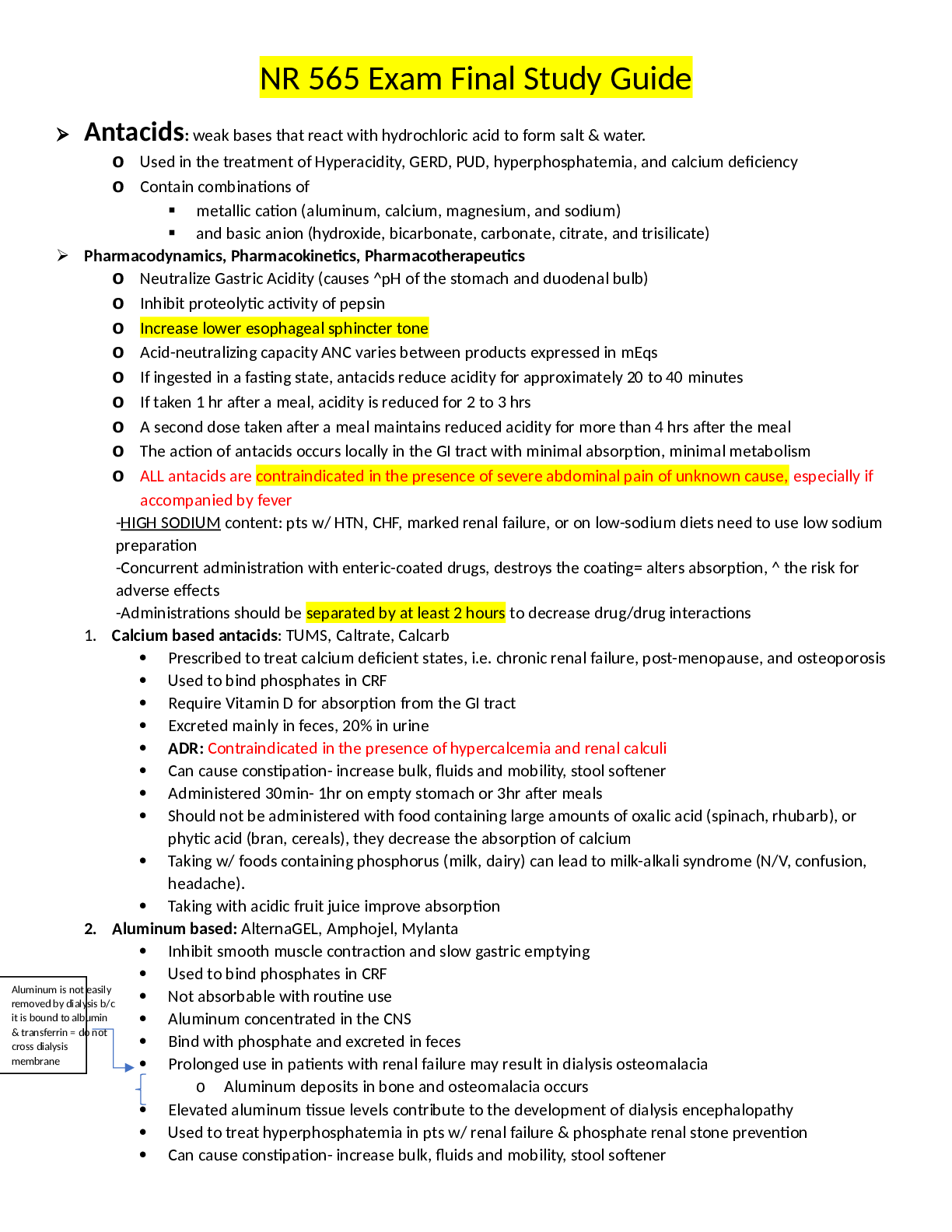


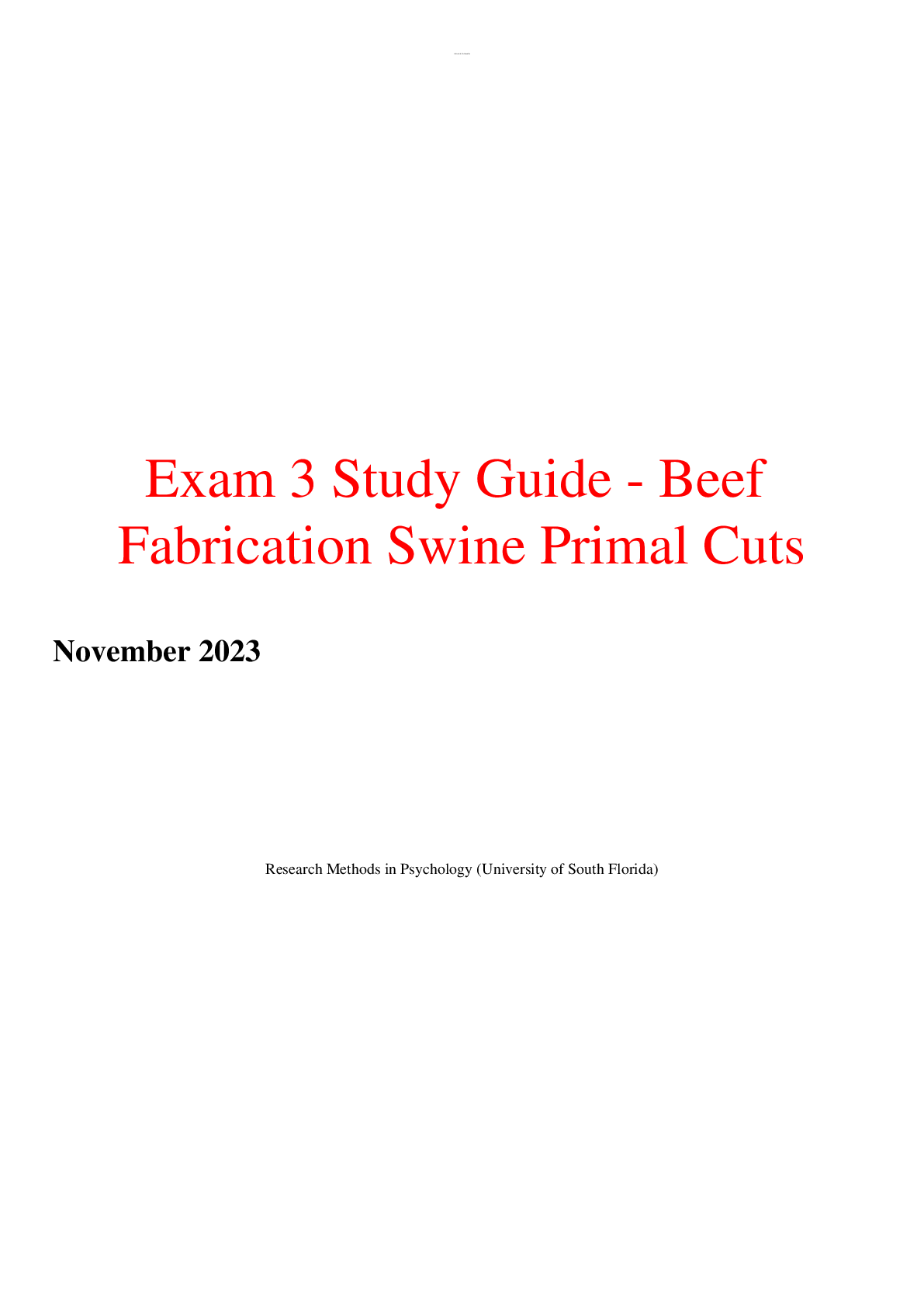
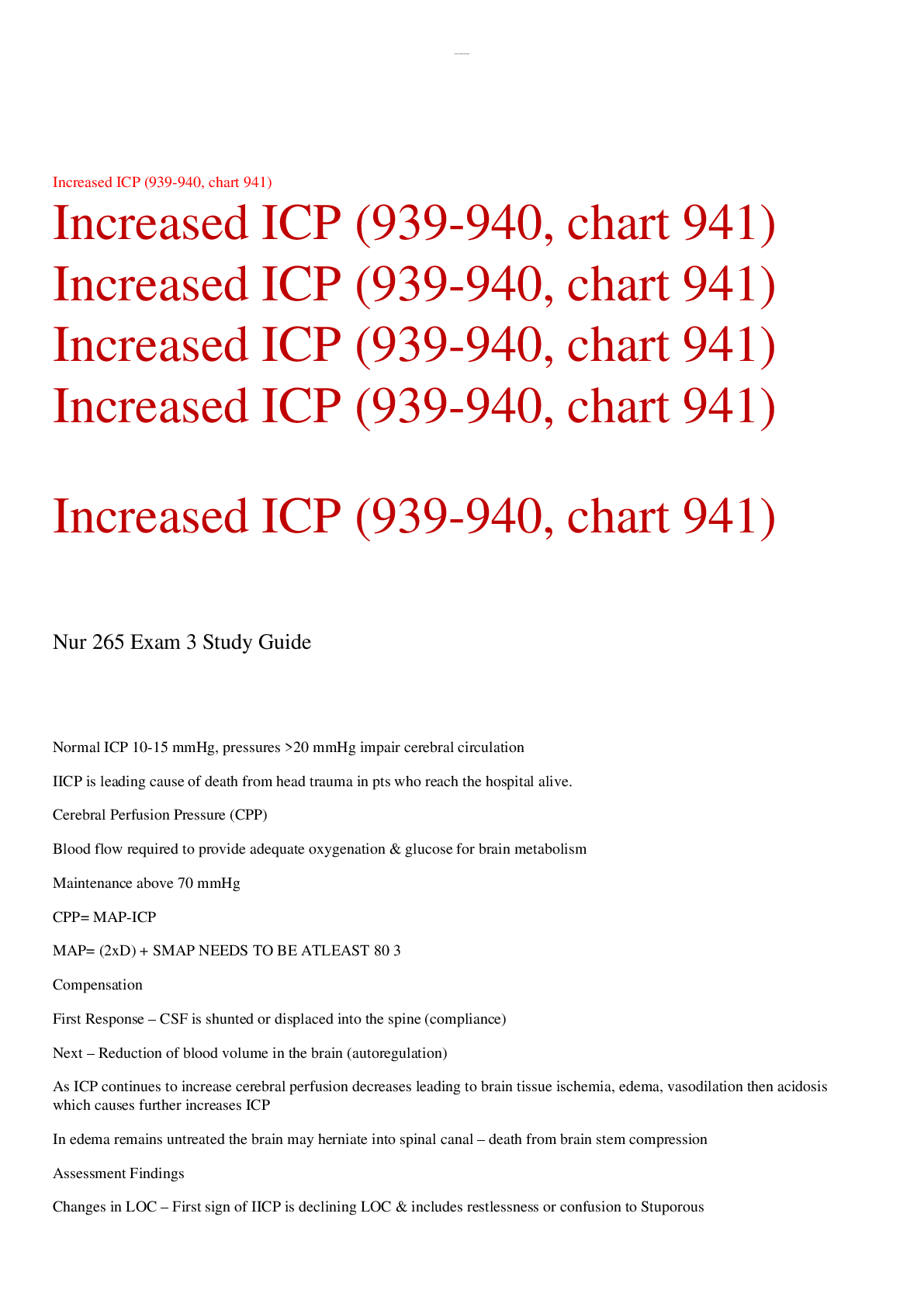
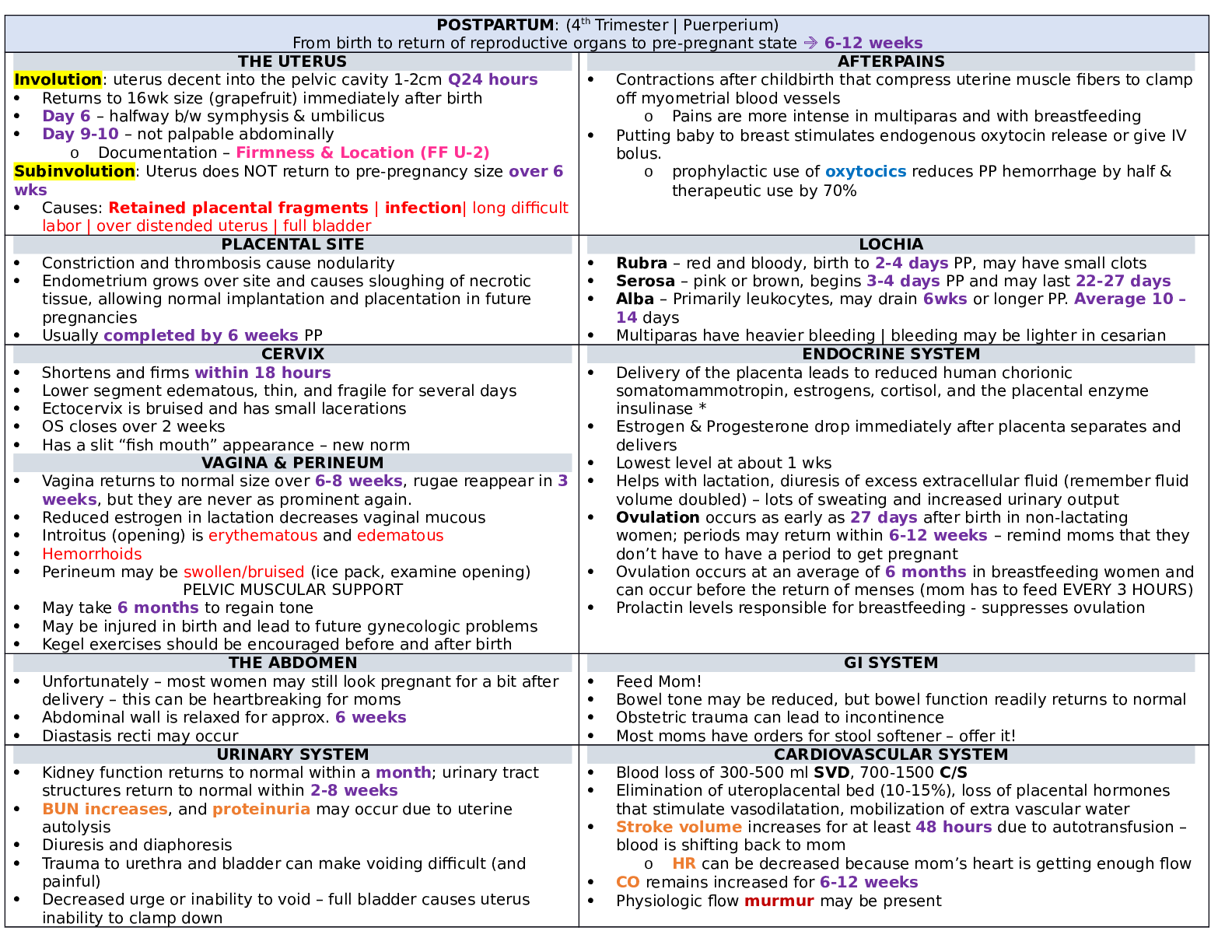
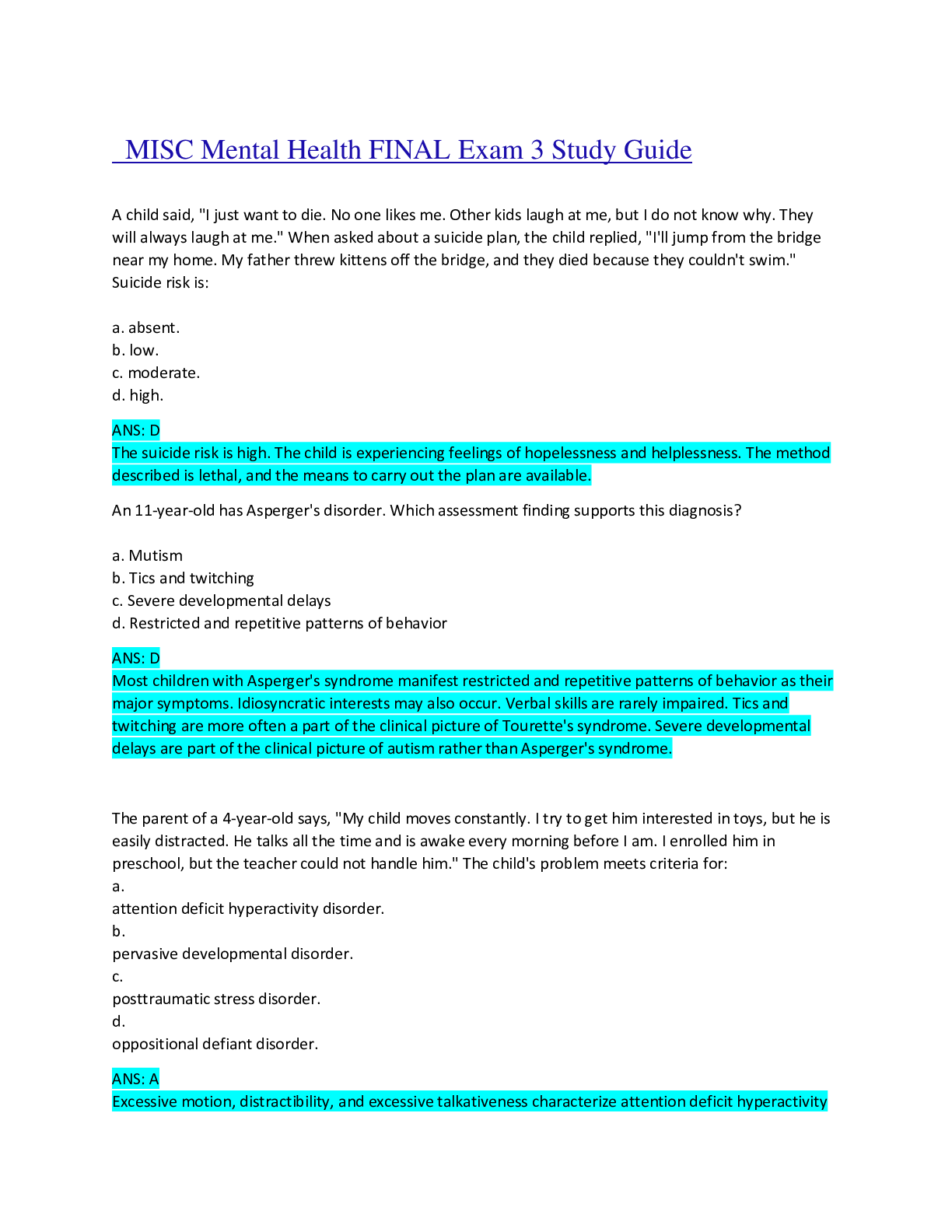
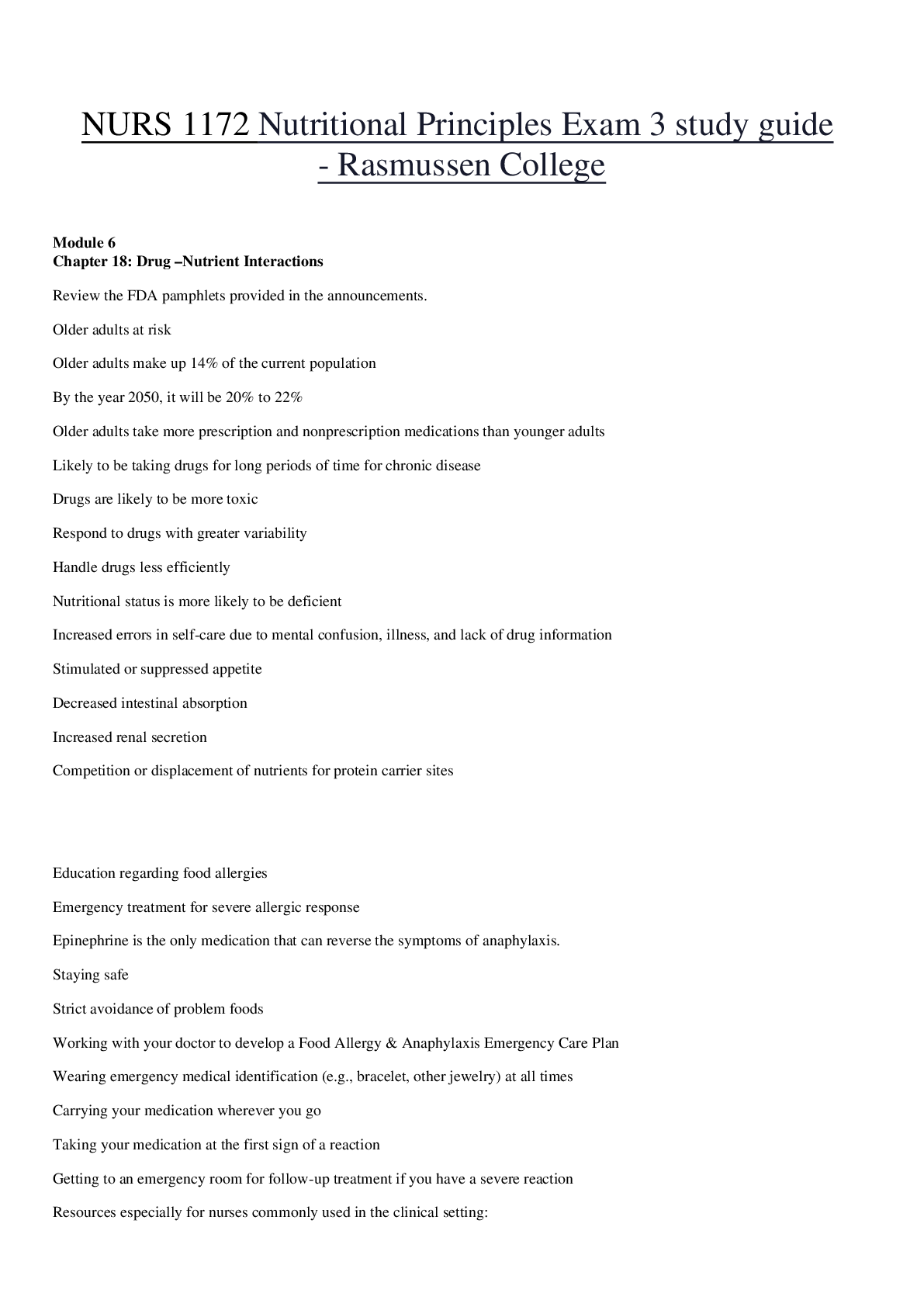
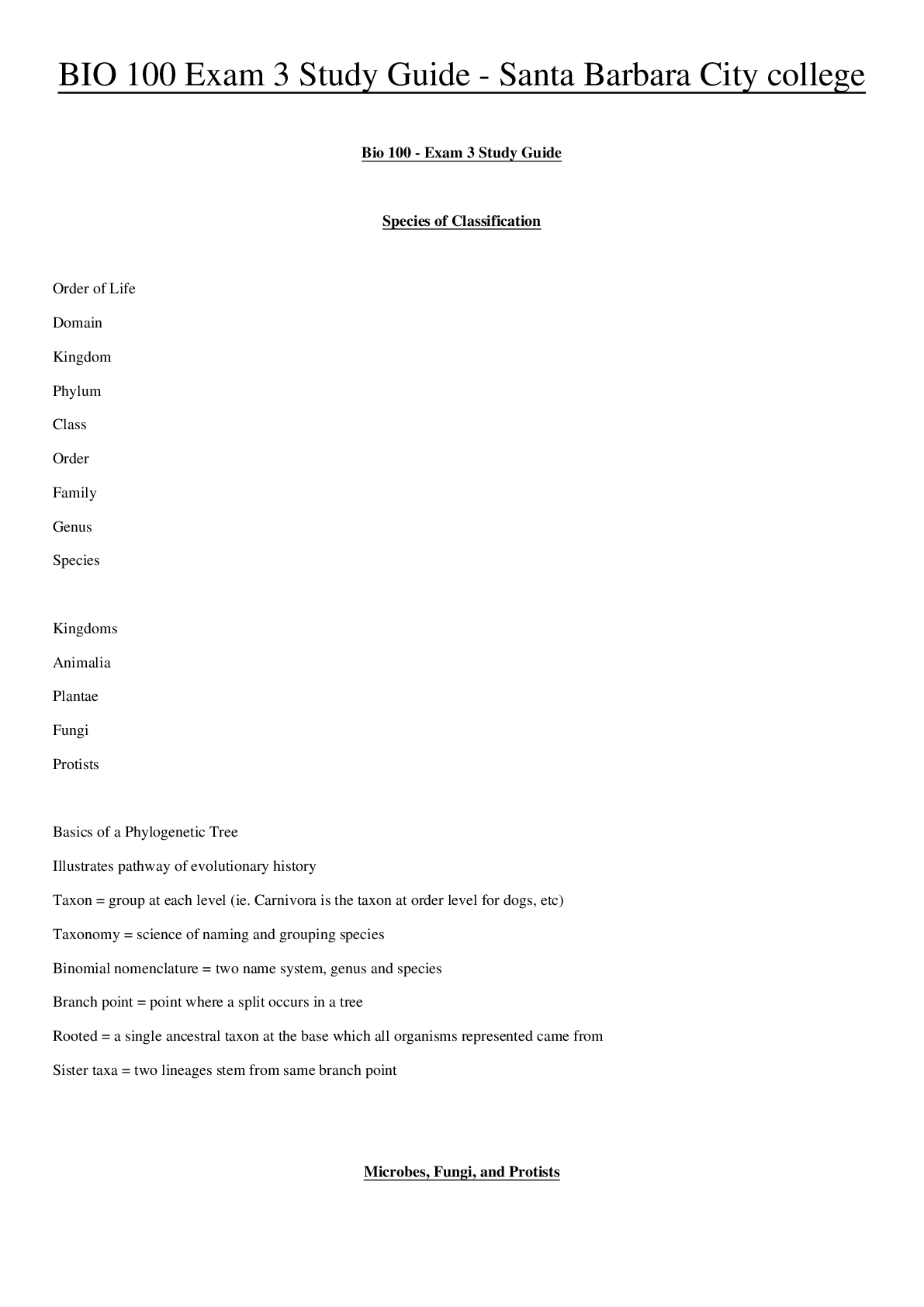


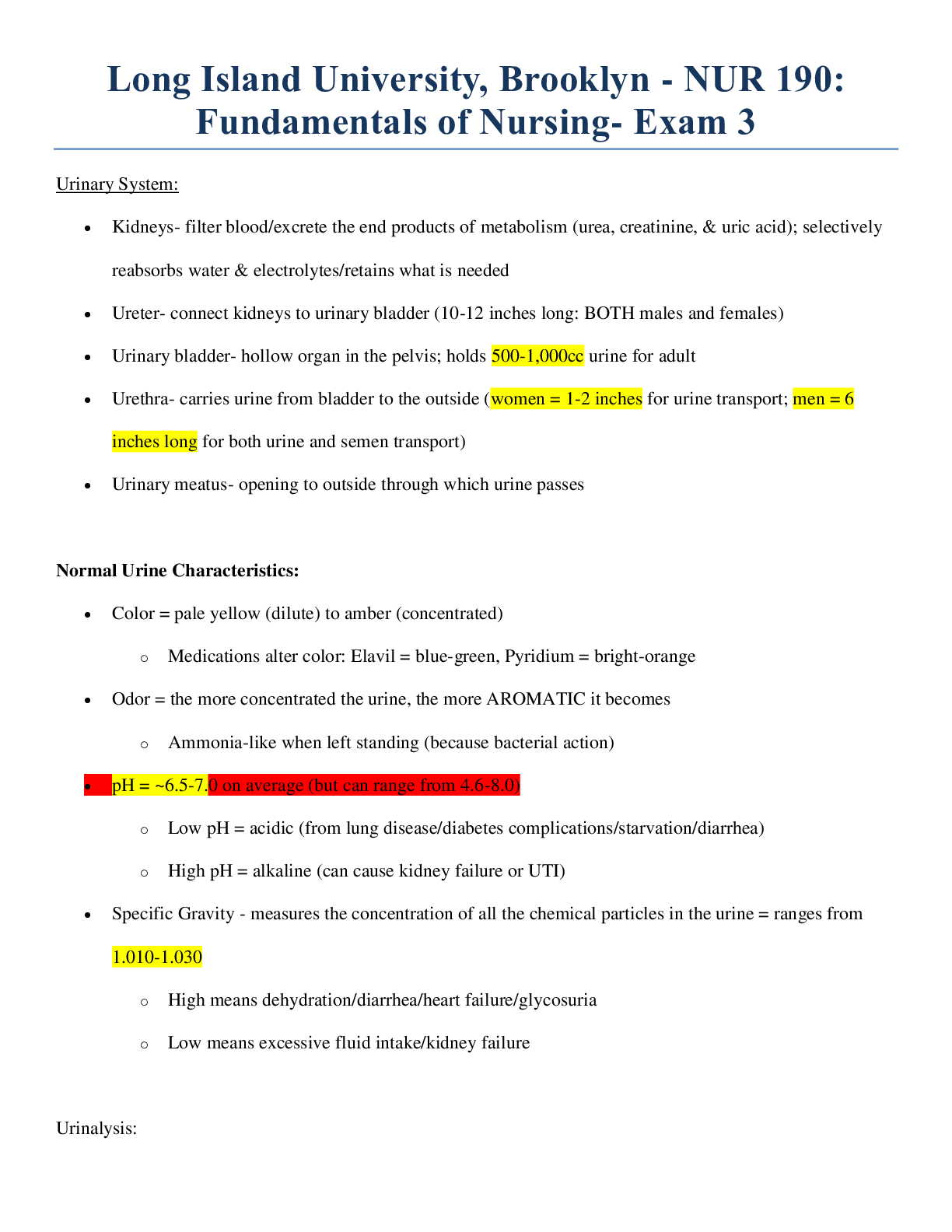

.png)

